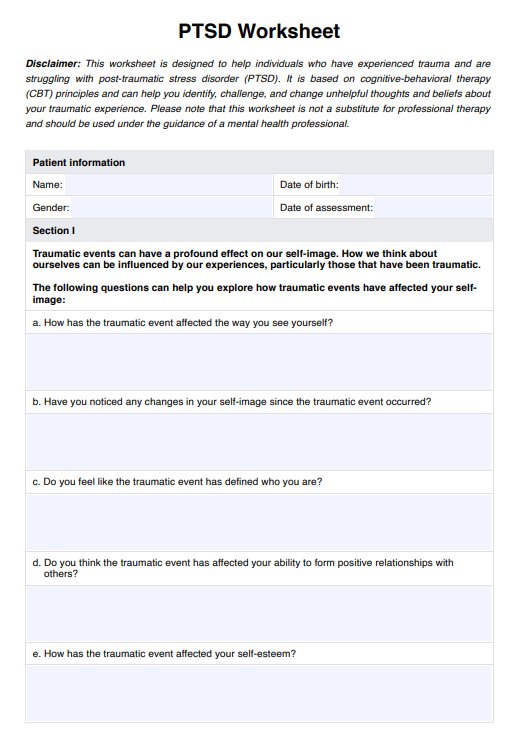To interpret the PTSD Worksheet, it is essential to carefully review your answers and reflect on what they reveal about your symptoms. Look for patterns or triggers contributing to your symptoms, and identify any negative self-talk impacting your mental health.

PTSD Worksheet
Learn how PTSD worksheets help mental health professionals and trauma survivors manage symptoms, identify triggers, and support the healing process.
PTSD Worksheet Template
Commonly asked questions
The PTSD Worksheet is designed to help individuals better understand and manage their PTSD symptoms. It can help individuals identify triggers, develop coping strategies, and better understand their symptoms.
The PTSD Worksheet can be administered in several ways. Mental health professionals can use the worksheet in therapy sessions, while individuals can work through their symptoms independently. The worksheet can be printed and completed by hand or online using a digital device.
EHR and practice management software
Get started for free
*No credit card required
Free
$0/usd
Unlimited clients
Telehealth
1GB of storage
Client portal text
Automated billing and online payments











